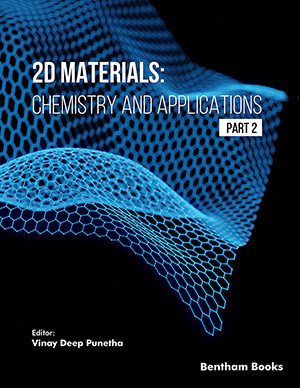Abstract
Due to its distinct physicochemical properties, silicene, a silicon allotrope with a 2-D honeycomb assembly, has attracted considerable interest from the entire research community. The mixed sp2 /sp3 hybridization of silicon atoms increases surface chemical activity and enables a range of mechanical and electronic characteristics. A new topology of silicon-based nanoparticles known as 2D silicene has recently been developed. It has a distinctive planar structure with a considerable surface, unusual physiochemical characteristics, and favorable biological effects. In theoretical observation, it exhibits remarkable characteristics and has many advantages over graphene as a 2D material, which makes it a more exciting component and a matter of deep study. So, the present chapter provides a complete overview of this 2D material covering its wide applications in different sectors. The chapter mainly provides insights into the synthesis approach and its characteristics, including its mechanical, electrical, and spintronic attributes. Then, to shed light on the various phases of silicene seen on the metal surfaces on its electrical structures, we describe the experimental characterization of silicene. The chapter also covers the most current uses of silicene outlined in the context of nanoelectronics.
Keywords:
Band Structure, Density Functional Theory, Scanning Tunnel Microscopy, Spin-Orbit Coupling, Xenes, 2D materials.

